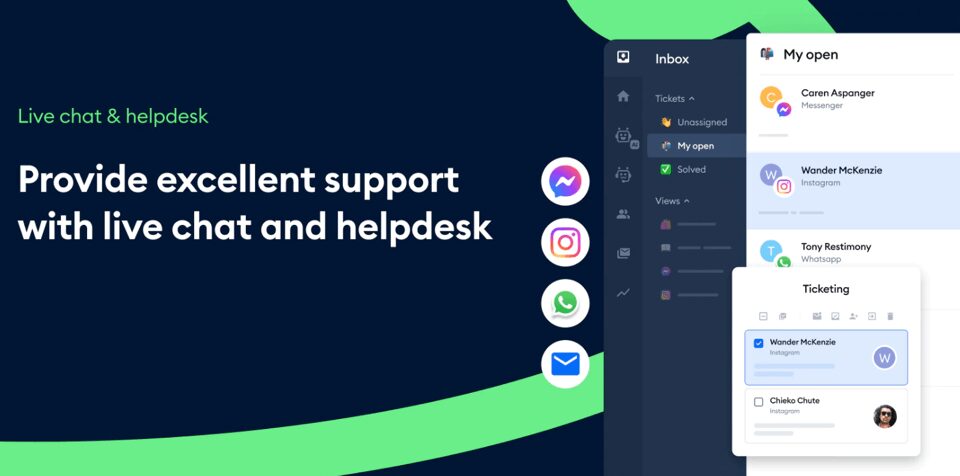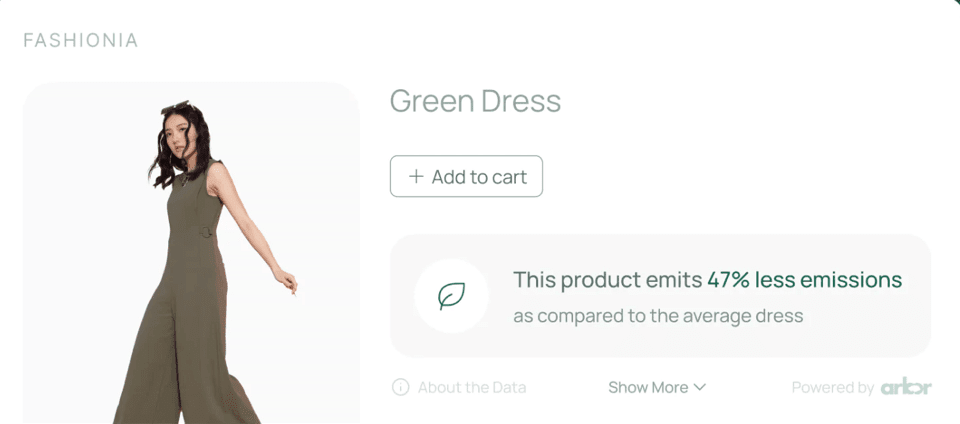Ecommerce web design trends have evolved dramatically over the past decade, and the current state of web design reflects this evolution. High-performing storefronts have to match customers’ exceedingly high expectations to stay ahead of the competition. Today, ecommerce websites are designed to be more user-friendly, visually appealing, and optimized for speed—and that still might not be enough to guarantee success.
Go beyond the basics with this Coalition Technologies guide to ecommerce design in 2024.
Table of Contents
The Biggest Shopify Trends: 2024 and Beyond
Next-Gen Visualization
Product visualization is crucial for ecommerce websites as it allows customers to get a better sense of the products they are interested in purchasing. Immersive visualization is a key ecommerce design trend, and it can supercharge your sales if implemented well.
By providing high-quality visuals of products, customers can better understand the product’s features, design, size, and color options. A bonus of immersive product visualization is that it can also reduce the chances of returns since customers are more likely to know everything they need before purchasing something.
- 360-Degree Views: This type of product visualization allows customers to view a product from all angles instead of a collection of generic static photos. Supporting this visualization shows that a business has complete confidence in its products, making it easier for first-time shoppers to convert.
- Augmented Reality: AR is a game-changer as an ecommerce web design trend, and leading brands like Amazon have already adopted AR for their websites to an impressive degree. AR allows shoppers to see what a product could look like, right in front of them. For example, you can see how a new bed might look in your room without ever visiting the store.

This ecommerce design trend can significantly boost customer engagement rates. In some cases, AR tech has increased customer engagement times from 30 seconds to almost eight minutes. This feature also allows brands to create a much more personalized shopping experience. For example, if a shopper has already visualized a double-sized bed for their room, the store can recommend products that meet those dimensions.
- Configurable & High-Resolution Images: Almost every ecommerce store has simple 2D images for their products, but it can be surprisingly difficult to find truly high-res product images. By offering high-res images for each variation of your products, your store can instill confidence in new shoppers. Customers can freely switch up sizes and colors to get an instant preview of their product variation.
Most brands follow this ecommerce design trend by hiring professional photographers for their catalogs. Alternatively, some businesses are also resorting to photorealistic renders for their products. These renders can be customized and updated anytime if the product undergoes any changes.
Made for Mobile
Mobile devices accounted for over half of all traffic worldwide in 2023. For brands with primarily mobile audiences, mobile-first design isn’t just an ecommerce web design trend; it’s the norm. The benefits of mobile-centric ecommerce designs in 2024 are more than worth it.
- Better UX: Prioritizing and building storefronts for mobile users naturally translates to a better overall user experience across multiple devices – this is particularly important for businesses that ship internationally. iOS might be king in the US, but Android devices command overseas markets. Following this ecommerce design trend means building a website that works equally well across all major screen sizes and phone specs.
- Easier Conversions: Mobile commerce design can increase conversions because it is focused on the user experience. Businesses can increase the chances of visitors completing a purchase by making it easier for them to navigate their store with fast load times and snappy animations. E-commerce has never been more competitive, and every slight advantage can pay huge dividends when it comes to conversions.
- Improved SEO: A better mobile design benefits your SEO efforts, both indirectly and directly. Pages that load quickly and can engage new visitors are more likely to be ranked well by search engines.
The link between page performance and SEO is well-known. What’s really driving this ecommerce design trend is Google’s announcement that they will index and rank mobile pages first. The platform announced this switch to conserve resources, as desktop crawling can be incredibly taxing. Naturally, this change makes high-performing mobile websites necessary for any ecommerce operation.
AI Integration: More Than an Ecommerce Web Design Trend
From customer support to personalized shopping experiences, the applications of AI for ecommerce are endless.
- Chatbots: AI-powered chatbots can provide 24/7 customer support to ecommerce customers. These chatbots use natural language processing (NLP) to understand questions and help customers with basic queries. Recent advancements in machine learning have made this ecommerce design trend a must-have for customer support. They can now remember customers’ past queries and fetch order data in seconds for personalized assistance.

That said, the value of having an actual human touch in your customer support cannot be overstated. Most ecommerce design guides in 2024 will highlight the importance of AI support, but it should be seen as more of an auxiliary tool that can help your existing customer support team deal with simple inquiries. Customers who grow frustrated with standardized chatbot support will quickly abandon their purchase.
- Personalization: Personalization is at the heart of modern ecommerce, and AI is the driving force behind this ecommerce design trend. AI can create a tailored shopping experience for each user by analyzing customer data. For example, machine learning algorithms can track a user’s browsing habits and preferences to recommend products they are more likely to buy.
This not only makes the shopping experience more memorable for the customer but also increases the likelihood of conversion for the business. - Technical Improvements: Performance and personalization are two of the most popular ecommerce web design trends right now. AI merges these crucial aspects of web design to improve your website behind the scenes.
AI tools can now actively improve your website performance in real-time by monitoring visitor behavior and reallocating resources as needed. If a user consistently shows interest in T-shirts, the AI can recognize this trend and preload image/video assets for other T-shirts so that they can load quickly if clicked on. Known as predictive loading, this ecommerce design trend ensures that your website performs well even during peak demand.
Similarly, machine learning algorithms can be used to identify the best ways to compress visual assets like images and videos. This intelligent compression can reduce resource usage while keeping your product images sharp.
Sustainability
In 2023, 82% of customers demanded eco-friendly practices from their favorite brands. Shoppers have never been more conscious of their responsibility to advance sustainable practices, and that awareness is now a core part of ecommerce.
The key to mastering this side of ecommerce design in 2024 is to embrace it. Customers are receptive to trends like greenwashing and can easily spot when a brand is merely paying lip service to sustainable commerce.
Here are a few examples of sustainable ecommerce designs:
- Sustainable Filters: Implementing sustainable product filters is a great way to follow this ecommerce design trend. It showcases your brand’s commitment to the cause while making life easier for your customers. Shoppers can use these filters to sort by sustainable products exclusively.
- Carbon Footprint Calculator: This tool is an excellent example of how ecommerce web design trends can immerse customers. By adding a carbon footprint calculator to your product pages, you can invite your customers to actively engage with sustainable practices. This tool provides a rough estimate of the environmental impact of each purchase and can highlight your business’s sustainable efforts.
Shopify merchants can also use plugins like Arbor to get started instantly.

- Green Hosting: Walk the talk by working with a green web host. Green hosting services like GreenGeeks run almost exclusively on renewable energy, and they’re a great way to reduce the overall environmental impact of ecommerce operations. Due to budget constraints, this ecommerce design trend might not be an option for every growing business, but hosting costs are expected to keep coming down as renewable energy adoption increases.
- Packaging Options: Customers always appreciate more options, especially when it comes to sustainability. Giving your shoppers the power to choose sustainable packaging options directly on the product page is a simple but effective way to make a difference.
Get Creative With an Expert Developer
Every ambitious idea mentioned here is perfectly possible with the right developer. Working with an expert ecommerce developer allows your business to go beyond the limits of ecommerce platforms to create a truly customized experience. Custom web design solutions are game-changers for ecommerce.
- Add new features to your store instantly to adapt to new ecommerce web design trends, without waiting for plugins or updates.
- Customize the look and feel of your storefront with unique designs that represent your brand values.
- Maximize your ROI by avoiding the expensive recurring charges that come with third-party plugins and platforms.
Work with the agency that creates ecommerce design trends. Contact Coalition Technologies for a free consultation, and let our team of web design experts take your brand to new heights.

